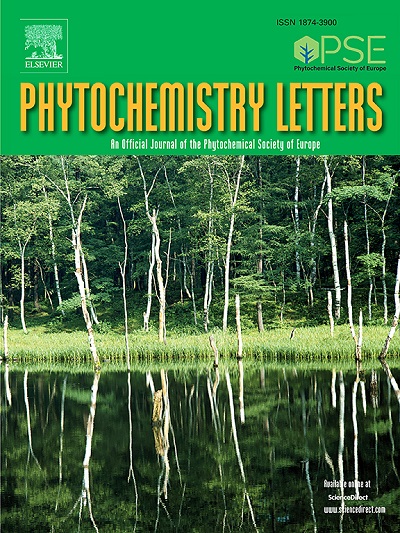Molecular docking and network pharmacology highlight salvianolic acids as potential inhibitors and therapeutic agents for COVID-19 treatment
IF 1.4
4区 生物学
Q4 CHEMISTRY, MEDICINAL
引用次数: 0
Abstract
Salvianolic acids have been shown to have therapeutic effects against COVID-19. However, their active compounds and underlying mechanisms have not yet been reported. This study aimed to investigate the effect of salvianolic acids against COVID-19 viral and human target proteins by integrating molecular docking and network pharmacology. Fourteen salvianolic acids were docked against 5 important viral proteins: Spike protein, main protease (Mpro), Helicase, RNA-dependent RNA polymerase (RdRp), and papain-like protease (PLpro). Network pharmacology was performed to identify the active compounds, potential targets and underlying mechanisms of salvianolic acids against COVID-19 human targets. The docking results revealed that 3 active compounds, namely salvianolic acids C, I, and N, bind to and stably interact with the active sites of PLpro, spike protein, Mpro, helicase, and RdRp, with low binding scores. From the network pharmacology results, a total of 7 active compounds and 12 core targets were selected for further analysis. The results of GO and KEGG enrichment analysis indicated that the anti-COVID targets of salvianolic acids are mainly involved in inflammatory processes and could prevent COVID-19 by inhibiting 4 signaling pathways: Coronavirus disease pathway, Cytokine signaling in the immune system, Th17 cell differentiation and Oncostatin signaling pathway. Molecular docking results indicated that all active compounds (Salvianolic acids A, C, I, J, L, N, and Y) could bind to all 12 core targets. However, salvianolic acids C, J, and N were found to be the main active compounds that bind with low (favourable) scores to JAK2, TYK2, and MAPK3 that were found to be the main targets for the treatment of COVID-19. This study revealed the active compounds and potential molecular mechanisms of salvianolic acids against viral and human COVID-19 proteins. These results can serve as a comprehensive reference for studying the mechanism by which salvianolic acids act on COVID-19 and additional research that involves in vitro and in vivo methods.
分子对接和网络药理学强调丹酚酸是治疗COVID-19的潜在抑制剂和治疗剂
丹酚酸已被证明对COVID-19具有治疗作用。然而,它们的活性成分和作用机制尚未见报道。本研究旨在结合分子对接和网络药理学研究丹酚酸对COVID-19病毒和人靶蛋白的作用。14种丹酚酸与5种重要的病毒蛋白:刺突蛋白、主蛋白酶(Mpro)、解旋酶、RNA依赖性RNA聚合酶(RdRp)和木瓜蛋白酶(PLpro)进行了连接。网络药理学鉴定丹酚酸抗COVID-19人类靶点的活性化合物、潜在靶点和潜在机制。对接结果显示,丹酚酸C、I和N 3种活性化合物与PLpro、spike蛋白、Mpro、解旋酶和RdRp活性位点结合并稳定相互作用,结合分数较低。从网络药理学结果中,共筛选出7个活性化合物和12个核心靶点进行进一步分析。GO和KEGG富集分析结果表明,丹酚酸抗covid靶点主要参与炎症过程,可通过抑制冠状病毒疾病通路、免疫系统细胞因子信号通路、Th17细胞分化和Oncostatin信号通路等4条信号通路来预防COVID-19。分子对接结果表明,所有活性化合物(丹酚酸A、C、I、J、L、N和Y)都能与全部12个核心靶点结合。然而,丹酚酸C、J和N被发现是与JAK2、TYK2和MAPK3结合分数低(有利)的主要活性化合物,而JAK2、TYK2和MAPK3是治疗COVID-19的主要靶点。本研究揭示了丹酚酸抗病毒和人COVID-19蛋白的活性化合物及其潜在的分子机制。这些结果可为进一步研究丹酚酸对COVID-19的作用机制以及进一步开展体外和体内方法的研究提供全面参考。
本文章由计算机程序翻译,如有差异,请以英文原文为准。
求助全文
约1分钟内获得全文
求助全文
来源期刊

Phytochemistry Letters
生物-生化与分子生物学
CiteScore
3.00
自引率
11.80%
发文量
190
审稿时长
34 days
期刊介绍:
Phytochemistry Letters invites rapid communications on all aspects of natural product research including:
• Structural elucidation of natural products
• Analytical evaluation of herbal medicines
• Clinical efficacy, safety and pharmacovigilance of herbal medicines
• Natural product biosynthesis
• Natural product synthesis and chemical modification
• Natural product metabolism
• Chemical ecology
• Biotechnology
• Bioassay-guided isolation
• Pharmacognosy
• Pharmacology of natural products
• Metabolomics
• Ethnobotany and traditional usage
• Genetics of natural products
Manuscripts that detail the isolation of just one new compound are not substantial enough to be sent out of review and are out of scope. Furthermore, where pharmacology has been performed on one new compound to increase the amount of novel data, the pharmacology must be substantial and/or related to the medicinal use of the producing organism.
 求助内容:
求助内容: 应助结果提醒方式:
应助结果提醒方式:


